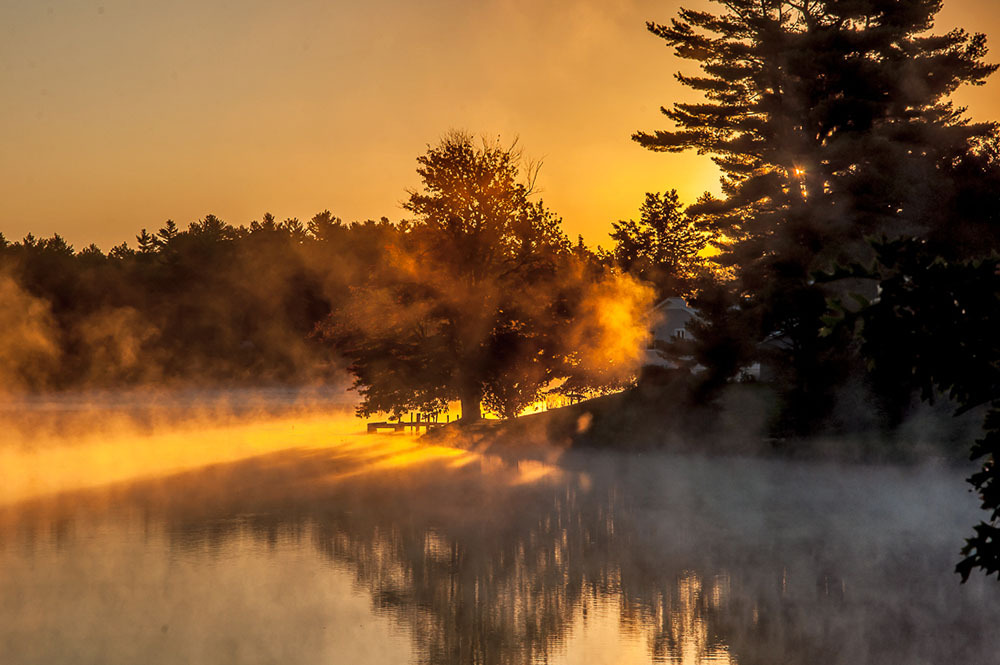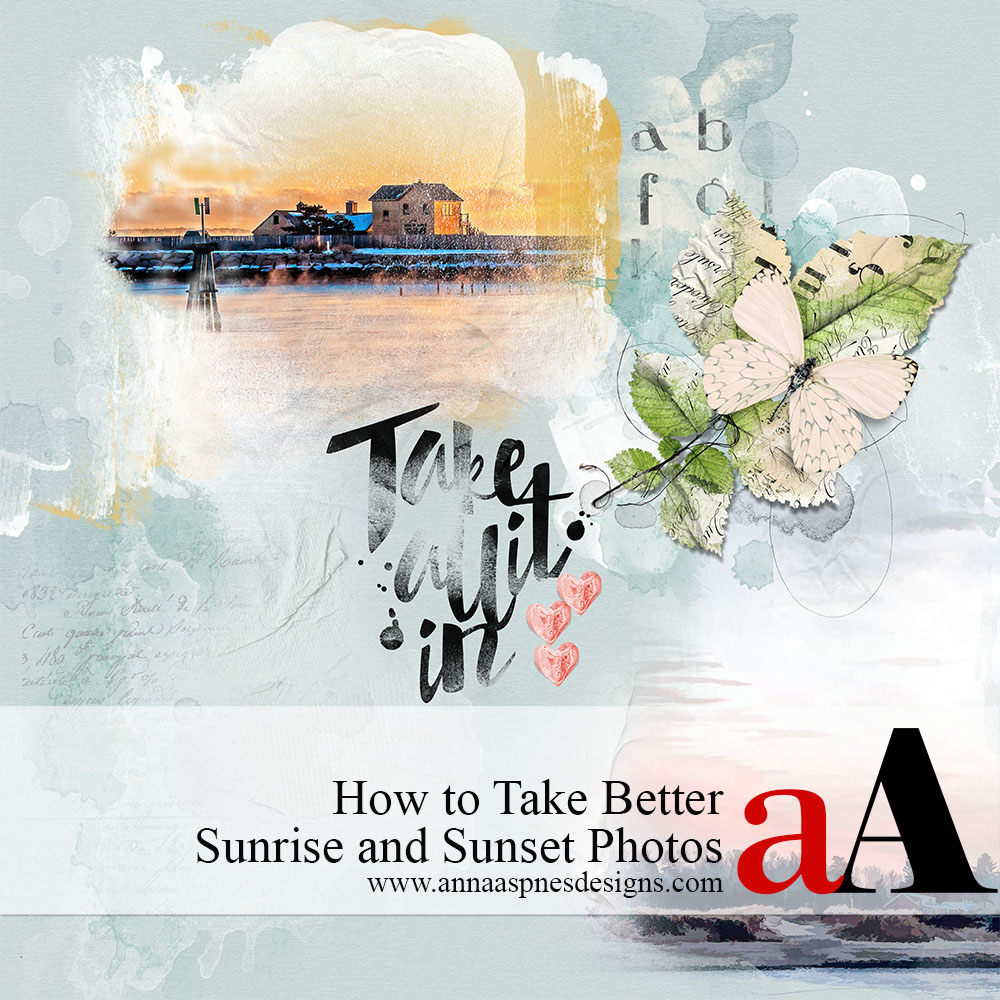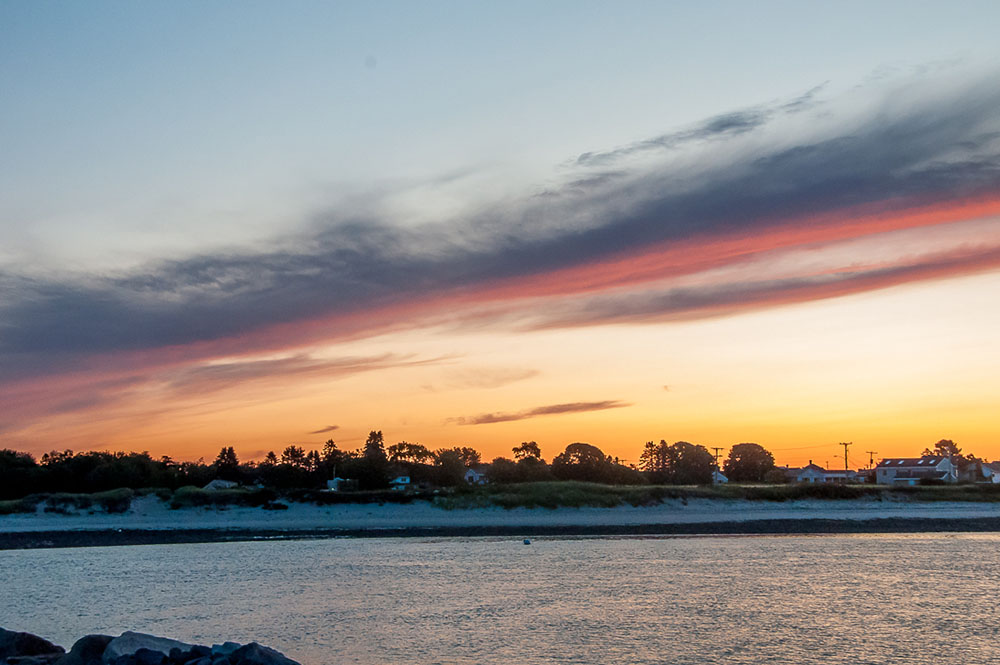Today [aalogo] Creative Team Member Joan Robillard is sharing her expertise on How to Take Better Sunrise and Sunset Photos.
How to Take Better Sunrise and Sunset Photos
Introduction
Learn How Take Better Sunrise and Sunset photos.
- It’s not difficult to take sunrise and sunset photos.
- But there are a few things to consider to make your capture memorable.
A magnificent photo is dependent on the following:
- Perfect Timing
- Weather Conditions
- Chosen Location
- Setting the Scene
- Ability to Manage Disappointment
Note. You will need to be prepared for the fact the sun will NOT always cooperate.
So let’s consider these five items.
1. Perfect Timing
“The world keeps revolving and won’t wait for you to arrive and get your camera set up.”
- Arrive at your chosen location and set up your camera in plenty of time
- A weather App or website will provide the time of the current days sunrise/sunset.
- Plan on arriving at least 15 minutes or half an hour before predicted sunrise/sunset.
- Consider the terrain and how long it will take you to get to your chosen shooting location.
Note. If you have to cross unfamiliar territory plan accordingly to get to and from your location and know that you’ll likely be ambling in the dark.
2. Weather Conditions
“You might think you need perfect weather, but this is not always the case.”
- You can get a beautiful photo after wind and rainstorm.
- You might find some lovely reflections in the ‘breaks’ of clouds.
- Some of the best sunrises happen in the winter when the air is crisp.
- Humidity affects sunrise photography.
Note. Low humidity produces more vibrant colors, which is why you see such beautiful sunrises in winter, while high humidity contributes to greater prevalence of muted colors.

3. Chosen Location
“I can see a sunrise or sunset if I step outside my house, but it wouldn’t make a great photo.”
- For example, I live on the East Coast and can capture beautiful sunrises from most places, but that isn’t always the case with sunsets.
- Think about where you can view the best sunrises as a given time of year and choose this location to capture it.
- Be imaginative with your locations as many sites lend themselves to beautiful photographs – In a city there may be a long street lined with tall buildings with lots of glass to reflect the light and offer interesting compositions.
- Consider places where the Horizon meets the sunrise/sunset – Beaches make excellent places for sunrises/sunsets but look for objects that will add visual interest to setting your scene.
Note.
- Water reflects the light beautifully, especially when the water is calm.
- Objects such as piers, boats in the water and trees all lend themselves to a unique photograph.

4. Setting the Scene
“A sunrise/sunset is a thing of beauty, but an exceptional photograph requires some thought.”
- This is my all time favorite sunrise photograph captured at a beach with a pier.
- There were many ways I could have captured the sun and I hoped to capture it as it came above or around the edge of the pier.
- Be ready for surprises – When I saw the sun coming through a window in the pier – I quickly took several shots.
- Another favorite spot is a jetty where you can view the harbor entrance and a piece of land with a house across the way – Lots of object to add visual interest.
- Try placing a Subject in the foreground of your photograph for interest such as people, buildings or natural fauna that will create silhouetted shapes in your images.
- Consider visiting a potential location ahead of time and observe the light and how it interacts with the surroundings before you start taking photos.
Note. Setting the scene in the right location is what creates stunning sunset and sunrise photos.

5. Disappointment
” You cannot control the weather or how the sun rises or sets.”
- Sometimes the sun rises and sets without much fanfare and that’s just the way it goes.
- You’ve got your camera set up in a scenic spot so look around for alternative subject matter.
- An excellent ‘Blue or Golden Hour’ photo opportunity may unfold -The ‘Blue Hour’ refers hour BEFORE sunrise AND after sunset, while the ‘Golden Hour’ is the time just AFTER sunrise AND before sunset.
Note. Another area of disappointment may be the photograph itself.
- Sunrise is on the cusp between day and night, so the area near the sun can be very bright while the foreground can be in shadow.
- It is important NOT to ‘blow out’ the sun by over-exposing your image.
- You can shorten your shutter speed to filter more light but this may yield a dark and uninteresting image.
- Photos can always be edited but another approach would be to use either a polarizing lens or an ND filter.
- Both options allow you to use longer shutter speed, not blow out the sun and give the foreground dimension.
Tip. Don’t have a polarizing lens or ND Filter? Try placing the lens of your sunglasses over the lens of the camera or smart phone.
Summary
Capturing a memorable sunrise or sunset in your photography requires planning and patience.
- Plan ahead by TIMING your shoot, checking the WEATHER and predetermining a LOCATION.
- Objects and Subjects help to make the SCENE more interesting.
- Mother Nature controls the sun so be prepared for DISAPPOINTMENT.
- Always look for OPPORTUNITIES to get outside and strengthen your photography skills.
See also:
And if you enjoyed this How to Take Better Sunrise and Sunset Photos post, please consider sharing using the social media buttons below.







2 Responses
Joan: What a great tutorial. I always love your images. You have some excellent points. I never plan any shots, just point and shoot, kind of like grab the camera and run. Probably why your images are so much nicer than mine. Thanks for the great info.
I learned a LOT too Terri! Love that the team members are always so willing to share with us.